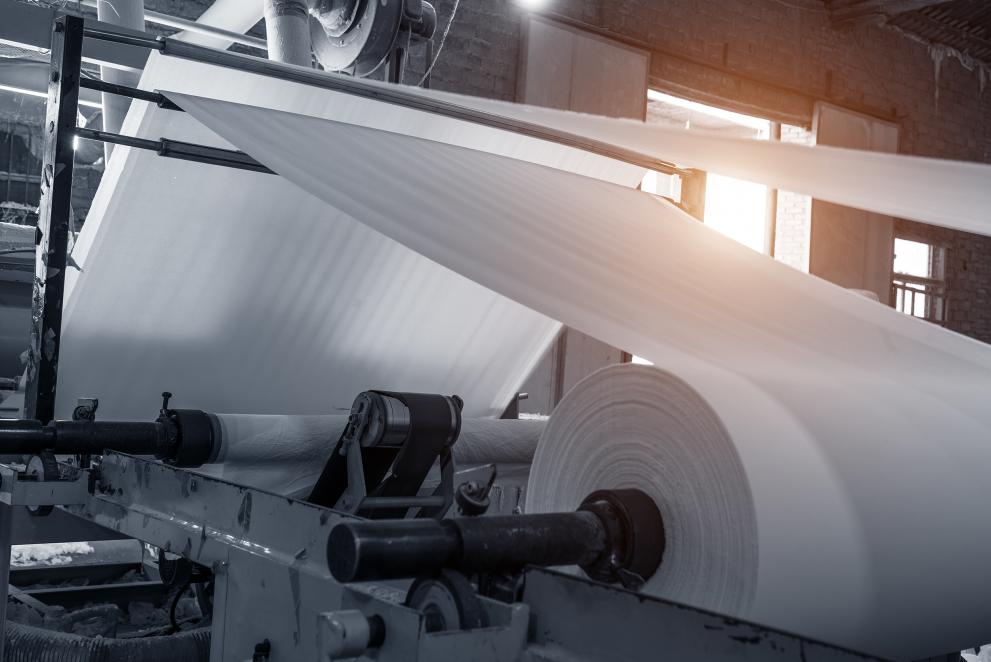
Even with increased production, by 2050 the European pulp and paper industry can reduce its energy consumption by 14% and greenhouse gas (GHG) emissions by 62% compared to 2015 levels.
The industry is the fourth most energy-intensive in Europe, so these reductions could play a big role in Europe's transition to a low carbon economy.
The JRC study "Energy Efficiency and GHG emissions: Prospective Scenarios for the Pulp and Paper Industry" quantifies this potential contribution and analyses how it could come about.
More pulp and paper production with fewer emissions
Most energy efficiency improvements in the industry could come by ensuring that new mills adopt existing best practices and technologies as they become operational.
Incorporating these practices and emerging technologies (such as heat recovery from thermomechanical pulping, black liqueur gasification or lignoboost) in existing mills could also bring efficiency improvements, albeit to a lesser extent.
Switching fuels - from natural gas, oil or coal to biofuels - would account for most of the savings in GHG emissions embedded in the products of the pulp and paper industry.
These reductions could happen despite an overall estimated growth in paper and pulp production of about 7% from 2015 to 2050.
This estimate is based on projections from a study on energy efficiency and energy saving potential in industry.
While some forms of paper (such as graphic and some specialty papers) have seen a drop in demand in recent years, for others demand has increased (such as packaging and hygienic papers).
Scientists input this demand growth into a detailed model to analyse the cost-effectiveness of investments in best available and emerging technologies at facility level, for 12 different pulp and paper products.
Pulp and paper by-products help other sectors to decarbonise
Biorefinery products from the pulp and paper mills can replace fossil fuels for light duty vehicles, be used as raw materials in the chemical industry or as fertilizers.
The JRC estimates a cost-effective energy production in 2050 of 270 petajoules of biofuels from these by-products.
This production would equal 1.8% of current final energy consumption in the transport sector, or around 8.6% of the energy used as raw material in the chemical industry.
Scientists note that the slow uptake of biorefineries by the industry in some regions deserves a close follow-up, to analyse whether additional policy initiatives can remove the barriers preventing its market deployment.
Carbon capture and storage (CCS) can further reduce GHG emissions
CCS can reduce CO2 emissions even further. The JRC analysis shows that the removal of bio-CO2 could contribute to the objectives of the Paris climate agreement and increase the chance of making CCS a game changer for the industry. To support this technology option an appropriate regulatory framework needs to be developed as the technology matures, including possible changes to the EU Emissions Trading System.
How to further increase the contribution of the pulp and paper industry to the 2050 emissions reduction targets?
Some emerging technologies, such us microwave drying, supercritical CO2 or deep eutectic solvent, were not incorporated into the analysis due to the lack of data about their economic or technical performance.
These or other emerging technologies may contribute to a further reduction of GHG emissions.
To do so would require a competitive industry that is able to invest in the research stages that are still pending for these technologies.
Therefore, policies supporting research and innovation in the pulp and paper industry will facilitate GHG emission reductions.
Related Content
JRC report: "Energy Efficiency and GHG emissions: Prospective Scenarios for the Pulp and Paper Industry"
Details
- Publication date
- 25 September 2018
